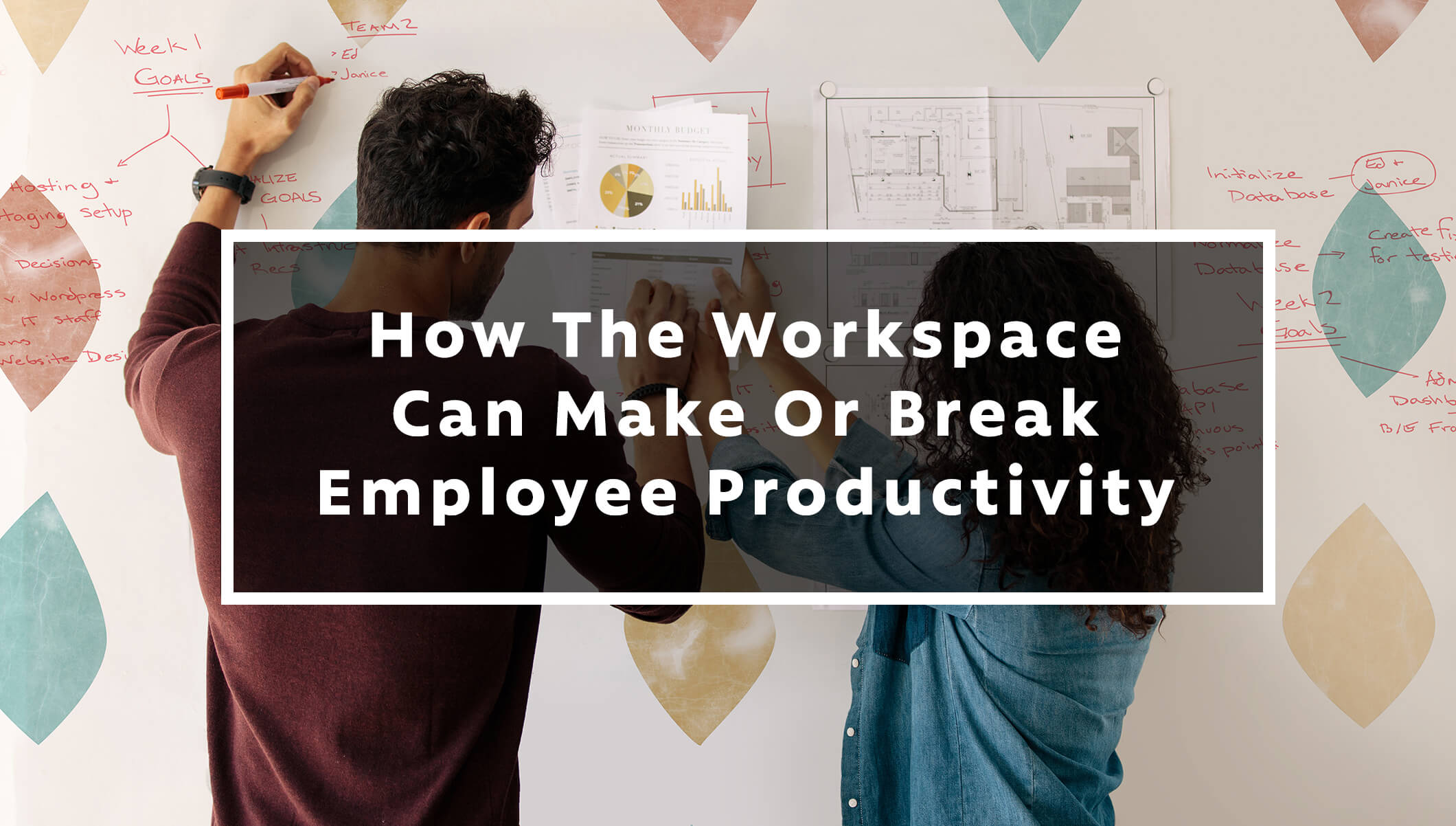How the Workspace Can Make or Break Employee Productivity
An office should be designed to help employees work to their full potential. Unfortunately, most office spaces fail to create a positive environment that fosters productivity. There are too many disturbances for employees to focus on their tasks. Knowing how your workspace can affect employee productivity proves crucial for businesses of all sizes.
Take care of your employees by considering what they need to be happy and focused. It’s important to create an environment that encourages productivity and provides motivation.
Tips for How Your Workspace Affects Employee Productivity
Let’s look at how an office environment can affect employee productivity.

Quiet vs Noisy
Productivity doesn’t mean silence. It’s impossible to eliminate all noise in the office, and you shouldn’t waste time attempting to. No workplace functions without some kind of noise, after all – whether it’s the whir of necessary machinery or simple communication between coworkers. In these cases, the noise goes hand in hand with productivity. But it’s essential to find a necessary balance so a loud atmosphere doesn’t disrupt work that requires quiet and concentration.
How does office design accommodate for this necessary balance?
Space planning is vital.
Companies should organize their teams and spaces to ensure louder departments are away from those who need a peaceful setting to work in. Of course, most people’s responsibilities include a mix of quiet, focused work and louder collaborative projects. So, the most effective space planning strategy is flexible spaces.
Have separate spaces for collaborative work and for individual work. Giving employees the freedom to move between them allows everyone to have the most optimal environment possible throughout the day.

In smaller office spaces it can be difficult to keep these spaces seperate, and noise travel easily. Take advantage of furnishings to improve acoustics.
Sound booths and privacy pods are popping up more and more in workspaces to cut the disruptive noise of meetings and phone calls. Furthermore, a wide variety of products can absorb sound and reduce noise in a space, including wall-mounted and suspended paneling. These aren’t merely functional but have a variety of beautiful designs to choose from to enhance the look of your space.

Getting Organized in the Workspace
A cluttered workspace means chaos, and chaos usually doesn’t allow efficiency to thrive. A cluttered office challenges productivity by keeping you disorganized. Keeping an office organized usually involves two major steps:
1. Having a Functional Organizational System in Place
2. Encouraging Everyone to Stick to that System
Without a clear system, you waste time going through cabinets and piles instead quickly finding what you need. It’s both a huge waste of time and a major source of frustration. An office should create a clear organization system, ensuring that employees stay productive. A good system is intuitive and clear. Tools in the toolbox, disposable dishware in the break room, etc. Get a good label maker and use it! Don’t rely on the collective memory of your team.

Step two is getting everyone to stick to that system. While most people thrive with less clutter, there are always a few employees that seem to naturally tend towards chaos. And when operations get busy, it can be easy for clutter to build up. Hold quarterly desk clean-up contests with prizes. Identify areas where clutter builds up or your organizational system is unclear and take steps to make it more functional. Get input from your team about what can make their lives easier and implement their ideas.

Innovation (Or Lack Thereof)
Innovation is all about optimizing the way a task has been handled before. Refusing to invest in innovative tools and technology can lead to lower productivity. For instance, many businesses don’t realize how limiting a traditional whiteboard is. Restricted in size, these boards make it difficult for employees to get inventive. With less space for ideas and larger groups, they limit your team’s potential for productivity.
A solution to this problem is a writable wall. By turning the entire wall into a writable space, these are great for offices as they allow more employees to collaborate. Furthermore, a custom peerhatch writable wall allows you to include inspirational or functional graphics.

The Importance of Furniture
The quality of office furniture has an impact on an employee’s health, comfort, and performance. Uncomfortable chairs and desks have both a short-term and long-term negative impact. One size doesn’t fit all, and ergonomics are everything. No one’s productive when uncomfortable, and long-term use of unsupportive furniture can result in more serious problems, such as back or neck pain.
Invest in furniture that gives your employees the support they need. Good back support is vital in seating. Adjustable tables and desks or risers ensure that keyboards and computer monitors are at optimal heights for every individual. Standing desks are another great option to promote movement and increased wellness. The aches and discomfort that come from poor furniture can kill concentration and productivity, so prioritize ergonomic seating and desks.

Thoughtful Interior Design
Office spaces that are excessively dull or extremely bright are equally distracting. The height of the ceiling, the colors, and the lighting all affect employees’ performance and productivity. On the other hand, low ceilings, proper lights, and a tasteful color theme can encourage analytical thinking. When considering the office’s design, remember that certain colors foster creativity and motivation. A smart mix of creative design elements encourages employees to push their own boundaries and stay on top of their tasks.
While designing office spaces, companies should consider the physical attributes of an office that impact productivity. It’s important to have designs and tools that will enable the staff to work hard and ensure improvement in their productivity. Underestimating how your workspace can affect employee productivity will only drag your business down.
Good Design Leads to Great Work
The environment we’re in has a huge impact on us. A good space can energize, inspire, or decrease stress. On the other hand, a bad environment can make us lethargic and distracted – it can even negatively affect our health. These statements are especially true regarding work environments, where productivity is vital. It’s difficult to be focused and inspired for hours every day in an office that’s unpleasant to be in. Investing in a great space is investing in your workers. Hopefully, our tips help you get started!

